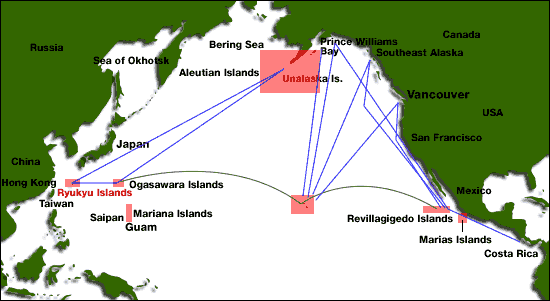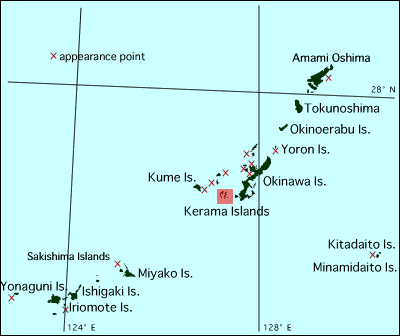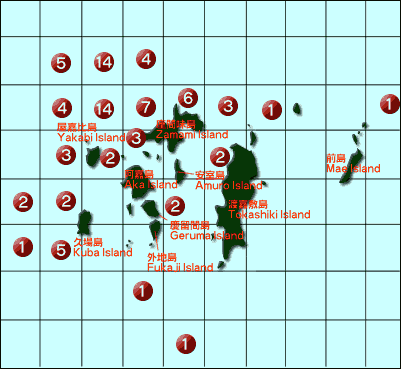The Range and Migration of the Humpbacks
At present in the oceans of our earth there are seventy-six varieties of whales and dolphins comprised of sixty-six kinds of toothed whales and ten varieties of baleen whales. Among those that can have confirmed sightings in the seas off Okinawa are nineteen varieties of toothed whales and seven varieties of baleen whales. One of the most frequently sighted among the baleen whales is the Humpback.
The Humpback Whales in the Pacific
The distribution of populations and migration for the Humpback include their feeding grounds in the Pacific Ocean, specifically the Okhotsk Sea, around the Aleutian Islands, the Bering Strait, the Gulf of Alaska and southwest Alaska.
During the summer they feast on the riches of the north Pacific and in the autumn they start their trek southward via the western Pacific to Okinawa, Taiwan, Ogasawara, and the Mariana Islands. This is where they stay through the winter and spring, after which they start their return northward to feed again.
The migratory routes they take on the eastern side of the Pacific; the California Peninsula, the Gulf of Mexico and the Hawaiian Islands are well known.

Frequent Humpback Appearance off Okinawa
Areas
Sightings of Humpbacks migrating through the seas off Okinawa include a wide range of areas. Confirmed sightings have been made in the Yaeyama and Miyako Island groups as well as the Satsunan islands. In particular, points they frequent when here have been studied in the Kerama Islands since there are whale-watching tours there. Also whales are frequently sighted between Zamami-jima Island and Tonaki-jima Island.
Period
Whales are often sighted in the period of year when the Humpbacks migrate to the lower latitudes, the winter months between the middle part of December until April. In particular, many sightings occur between January and April.

Whales in Kerama Islands

from winter survey, 1991, between January and March.